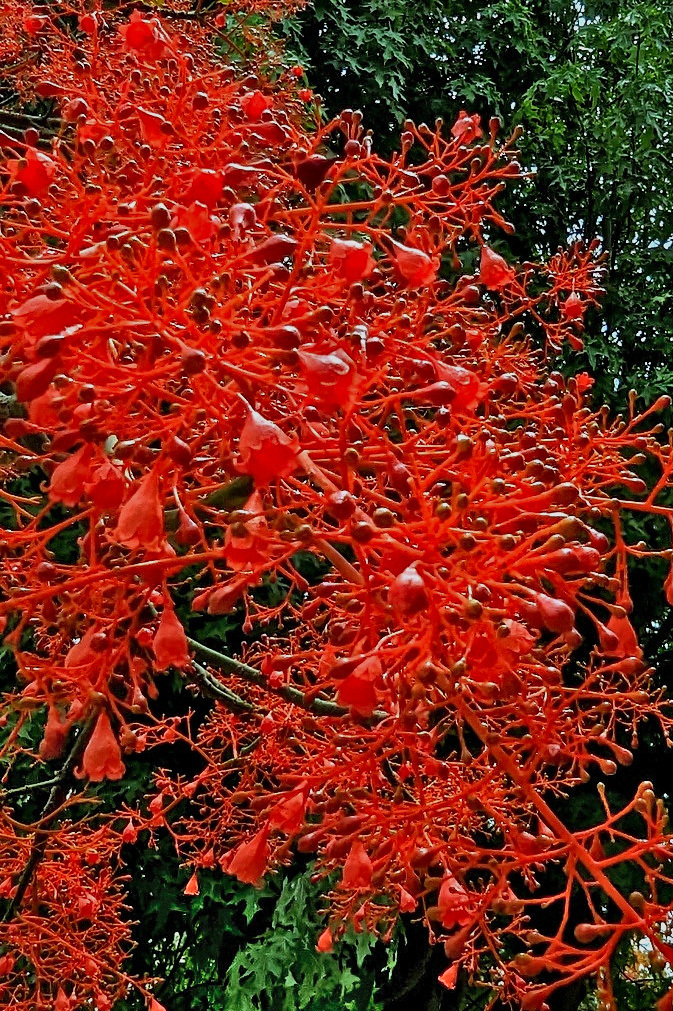
Brachychiton is a genus of flowering plants that belongs to the family Malvaceae. It comprises around 30 species of trees and shrubs, native to Australia and New Guinea. The name “Brachychiton” is derived from the Greek words “brachys,” meaning short, and “chiton,” meaning tunic, referring to the short, corky bark of the trees.
Brachychiton species are known for their distinctive appearance and ornamental value. They are commonly referred to as “bottle trees” or “kurrajongs” due to their swollen trunk shape resembling a bottle or vase. The trunk serves as a water storage organ, enabling the tree to survive in arid conditions. Some species can reach impressive heights, while others are smaller and more shrub-like.
The leaves of Brachychiton trees are typically large, lobed, and deciduous. They provide a beautiful display of vibrant green foliage during the growing season, turning yellow or reddish before falling off in the colder months.
One of the most famous species within the genus is Brachychiton discolor, commonly known as the Queensland bottle tree. It is renowned for its stout trunk and attractive bell-shaped flowers, which vary in color from pale yellow to pinkish-red. The flowers bloom in clusters and are a striking sight when in full bloom.
Brachychiton trees are often cultivated for their ornamental value in parks, gardens, and streetscapes. They thrive in warm temperate to tropical climates and prefer well-drained soil. These trees have a relatively slow growth rate but can live for many decades, adding a touch of beauty and uniqueness to their surroundings.
In addition to their aesthetic appeal, Brachychiton species also play a significant ecological role. Their flowers attract pollinators such as birds, bees, and butterflies, contributing to the local ecosystem’s biodiversity. The trees also provide shelter and nesting sites for various bird species.
Overall, Brachychiton is a fascinating genus of trees and shrubs, admired for their distinctive trunk shape, beautiful foliage, and showy flowers. Whether seen in their natural habitats or cultivated in gardens, these plants are a delightful addition to the botanical world.

